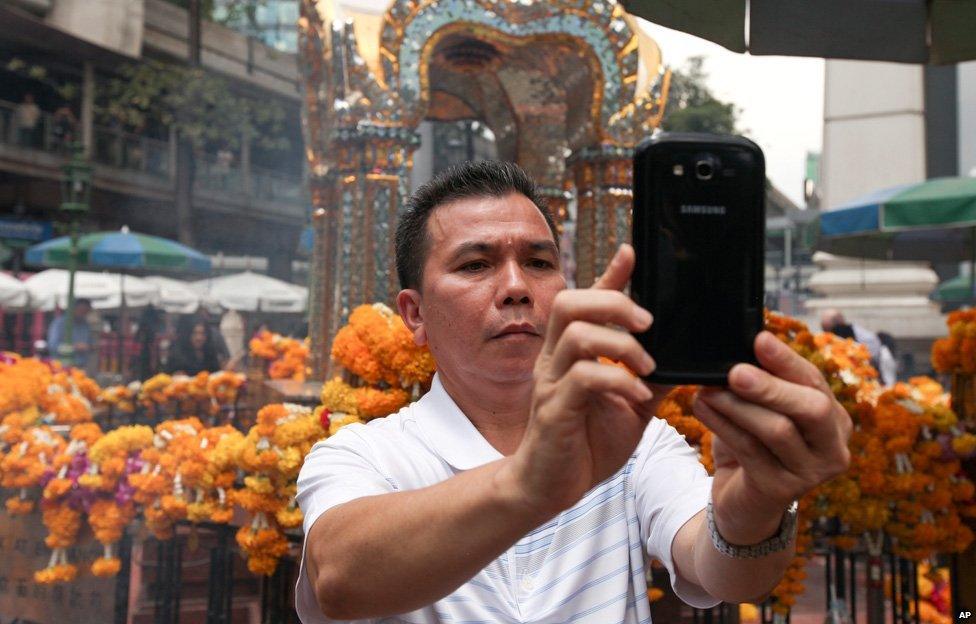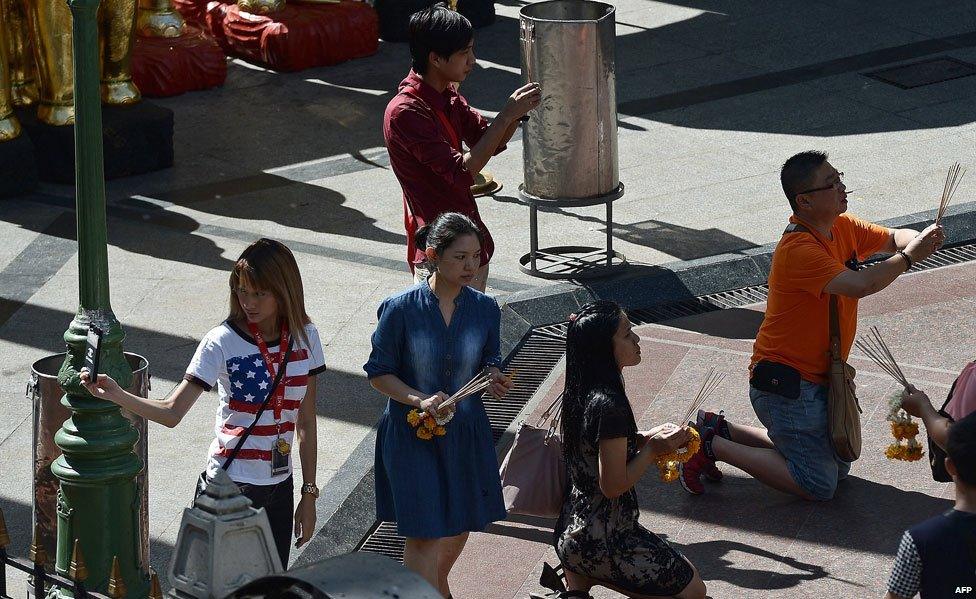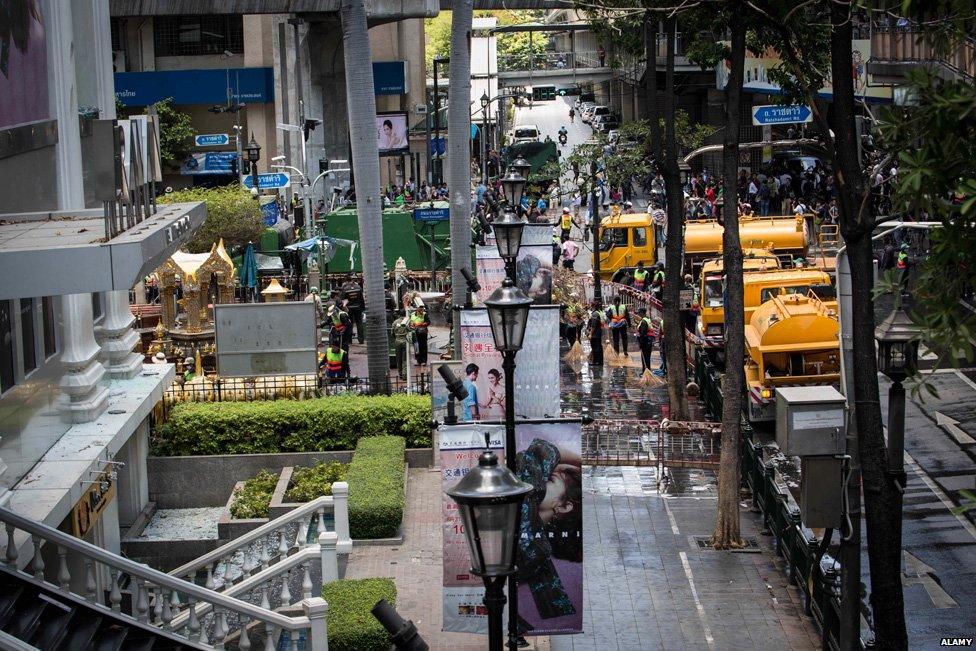The age of the tragic selfie
- Published

When daily life resumes at a scene of death and destruction it's usually a hopeful sign. At the Erawan shrine in Bangkok, the site of Thailand's most deadly bomb attack, it didn't take long for Hindu worshippers to return - and with them came other people taking selfies. Is this now a natural response to tragedy?
Sometimes it's the smallest detail which makes the deepest impression. Fourteen years after 9/11, I remember the silence of the New York bar I went to in the evening after the attacks more than the events of the day itself.
And now it's the smell of incense in my clothes which lingers and which I find hopeful. The aroma of worship at the shrine in Bangkok means normal life is insistent on returning. Ordinary people very quickly sought peace at a place ripped apart by violence.
And the image of a small patch of freshly-laid concrete, its moistness, glistening in the fierce morning light. It says much about a determination to recover the routine of normal life. The bomb exploded at seven in the evening on Monday and by Wednesday morning the indentation had been concreted over with great determination.
It's true this resumption of daily life, where worshippers bow and kneel before the statue of the Hindu god of creation, Lord Brahma, has been punctuated by swirls of officialdom, ambassadors and politicians sweeping through with their entourage of helpers and photographers. But routines have resumed.
It didn't take long for the sellers and hawkers to return.
And the routine of normal life in our modern times involves the selfie.
It's hard to know exactly what ritual is played out when we stand in front of a scene of tragedy and take a picture of ourselves. There is a debate among some Jewish groups, for example, about taking selfies at the Auschwitz-Birkenau death camp, of all places - some say it's an act of utter insensitivity and others that at least these selfie-takers have visited the place and may reflect on its horrors.
In Bangkok, I watched a few people at the shrine angling themselves so that the scene of mass-murder would appear in the shot behind them.
There is a global tourism industry and I suppose that participating in its rituals doesn't mean that your brain or your heart has switched off. And who are we as journalists with our cameras to condemn citizens with their cameras?





A quarter of a century ago, a few months after the fall of communism in Eastern Europe, I took trains round Poland and Czechoslovakia, and ended up on the site of the death camp at Birkenau. It was deserted and bitterly cold. The ice was packed solid underfoot, and I still remember the small detail of the crunch and the coldness and a rose-red wintery sun of an early dusk in a milky sky. My friend and I were alone on this expanse with only the outlines of the huts in which the doomed existed.
And then, a taxi pulled up, and out jumped two tourists. While the car waited, they each took a picture of the other in front of the railway line which brought about a million people to their murder. Then they got back into the car and drove off. That was it.
It would be nice to think these picture-taking visitors to a site of horror later used their portraits to reflect on the enormity of what had happened there, but I'm not convinced they did.
Technology, of course, has moved on. Where we used to take pictures of each other, now we don't even need that extra pair of hands. The selfie in front of a scene of tragedy no longer demands two people - that's why it's called a selfie.

But better technology doesn't necessarily bring greater insight. We now see the very moment of murder through CCTV cameras, the moment the bomber placed the bomb.
We see the moment of evil but we are no closer to seeing inside the mind of the evil-doer. For me, the image which lingers is not that grainy footage of a bomber, but the fresh concrete covering up his deeds - fresh-hopeful concrete asserting the will to return to the routine of normal life.
The difficulty is that concrete only covers material damage. It can't cover up the pain of the bereaved and injured.
How to listen to From Our Own Correspondent, external:
BBC Radio 4: Saturdays at 11:30. Listen online or download the podcast.
BBC World Service: At weekends - see World Service programme schedule or listen online.
Subscribe to the BBC News Magazine's email newsletter, external to get articles sent to your inbox.